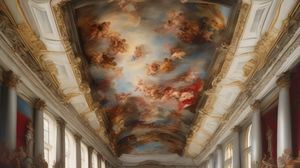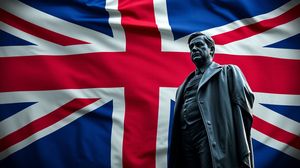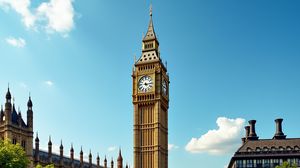
The Cenotaph in Whitehall, London, stands as a poignant national war memorial, commemorating the British and Commonwealth military personnel who died in the First and Second World Wars and later conflicts. Designed by Edwin Lutyens, it was unveiled in 1920 and has become the focus of national remembrance events, especially the Remembrance Sunday service held annually in November.
The Cenotaph's stark, austere design is deliberate, marking a departure from more ornate memorials. Its shape is based on a cenotaph, an "empty tomb" which serves to honor the fallen who have no known grave, giving it profound significance. The structure is devoid of religious symbols, underscoring the universality of remembrance for all faiths and beliefs.
An interesting architectural feature of The Cenotaph is its use of 'optical correction,' a technique similar to that used in ancient Greek architecture, making the vertical faces of the monument imperceptibly lean toward each other. This subtle design trick promotes an illusion of greater grandeur and height, engaging the viewer in a subtle play of perspectives.
The memorial bears the simple inscriptions "The Glorious Dead" and the dates of the two World Wars. Absent are individual names, reinforcing its role as a communal and collective place of remembrance for many thousands lost in the conflicts.
Unbeknownst to many, the original Cenotaph was a temporary structure made of wood and plaster, erected for the Allied Victory Parade in 1919. However, its impact was so significant that it was replaced with a permanent Portland stone version, which stands today. This transition from temporary to permanent memorialization speaks to its profound national resonance.
The Cenotaph often attracts solemn gatherings and is lined with wreaths of red poppies, symbolizing remembrance and hope. The striking simplicity of the monument, combined with its immense symbolic weight, invites reflection on the costs of war and the importance of peace.

Making the Most of Your Visit:
If you're visiting on Remembrance Sunday or any significant national date, arrive early to find a good viewing spot. The Cenotaph becomes the focal point of the remembrance commemorations, drawing large crowds.
Take a few moments to observe the changing light on the stone. The Portland stone used for the Cenotaph has a unique quality of appearing differently as the light changes throughout the day, offering a subtly different experience at sunrise, midday or sunset.
Consider visiting in silence to truly appreciate the somber reflection that The Cenotaph invites. The area is often quieter than you might expect for such a central location, which helps maintain the respectful atmosphere.
Look closely at the inscriptions; their simplicity is powerful and intentional. They encapsulate a universal message of commemoration without the complexity of additional text or ornamentation.
Notice the optical illusion aspect of the design. If you stand at a specific angle, you might catch the impression of the sides leaning inwards slightly, highlighting the architect Lutyens' intention to create a subliminal grandeur.

Visiting Times & Costs:
The Cenotaph in Whitehall is open to the public 24 hours a day, all year round. As it is an outdoor monument located on a public street, there is no entrance fee or charge for visiting.
Visitors should be mindful that during significant national events, such as Remembrance Sunday and the National Service of Remembrance, access may be restricted or crowded due to ceremonial events and security measures.
No specific accessibility issues are associated with the monument itself as it is situated on a public street with standard pavement access. However, visitors requiring accessibility support might need to consider potential crowding or the relatively busy traffic environment when planning their visit.

Address & Map:

Nearby:























